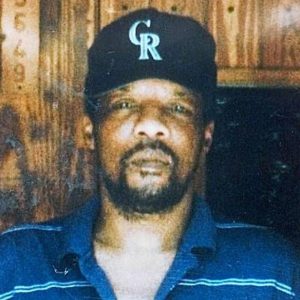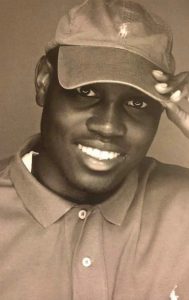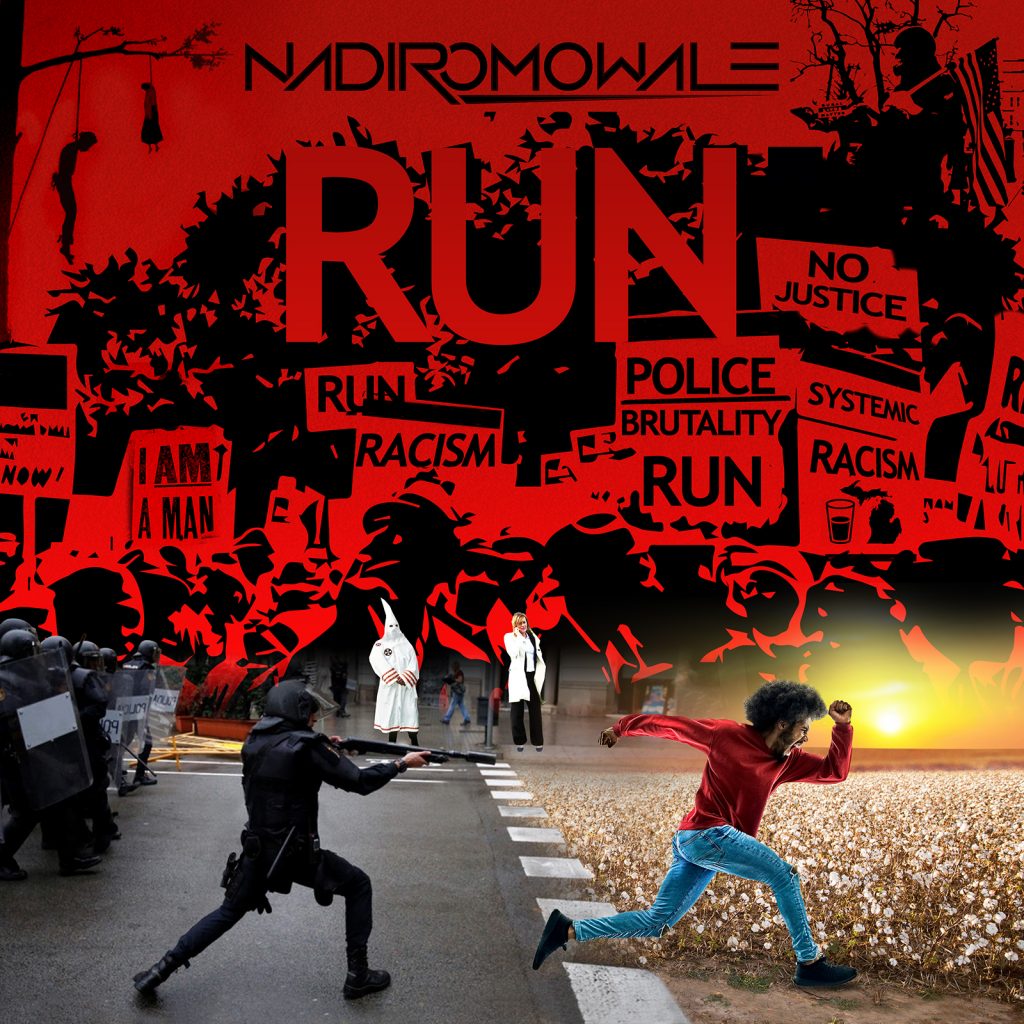“Run” is a digital single released Juneteenth (June 19, 2020) – CLICK HERE FOR MORE INFORMATION
“I believe Mr. [Ahmaud] Arbery was being pursued, and he ran till he couldn’t run anymore, and it was turn his back to a man with a shotgun or fight with his bare hands against the man with the shotgun. He chose to fight,” he said. “I believe Mr. Arbery’s decision was to just try to get away, and when he felt like he could not escape he chose to fight.”
Originally, I got the story wrong.
 What really happened was this: On June 7, 1998, 49 year-old James Byrd, Jr. of Jasper, Texas saw Shawn Berry, a 23 year-old man he knew from around town. Berry’s buddies John King, and Lawerence Brewer were riding with Berry in his pickup truck, and though it would be a tight fit, they offered Mr. Byrd a ride home.
What really happened was this: On June 7, 1998, 49 year-old James Byrd, Jr. of Jasper, Texas saw Shawn Berry, a 23 year-old man he knew from around town. Berry’s buddies John King, and Lawerence Brewer were riding with Berry in his pickup truck, and though it would be a tight fit, they offered Mr. Byrd a ride home.
The cab of the truck would have been a bit uncomfortable as King and Brewer squeezed James into the seat in between them. That discomfort might have turned to absolute terror if James happened to look down and notice King’s tattoos, one of which said “Aryan Pride”, along with assorted Nazi symbols, and one that depicted a Black man hanging from a tree.
James Byrd never made it home. The three white men drove him to a remote county road outside town, beat him within an inch of his life, spray painted the Black man’s face, urinated and defecated on him, chained him to the back of the pickup truck, and hit the gas. They drove three miles, dragging James behind the truck, before they stopped to untie him. They dumped his decapitated corpse beside a cemetery, and then went for barbecue.
But I misunderstood the story when I first heard it. In reality, Brewer, King and Berry had lynched James Byrd, Jr. after beating him, by chaining his ankles to the back of that pick up truck. The coroner believes Mr. Byrd was conscious for half the journey, his body being ripped to shreds until his right arm and head were severed. His brain and skull were found intact in one of 81 different locations where his body parts were located along that county road.
For some reason, for a long time I thought James Byrd was on his feet and that they had tied his hands. In my mind he was upright, fastened by his wrists, not his ankles. Then as they started the truck and pulled away, he would have to keep up. With that in mind, I imagined myself behind that truck, wrists bound as the vehicle begins to move and gradually speed up. The first thought that came to mind was a question. “How far can I run?”
_________
“Run” is one of the most difficult songs I have ever written.
Actually, the first version came very quickly. It was penned within one week of James Byrd’s lynching, and I performed it solo acoustic at an iconic Nashville open mic night called The Spot a few days later. But something wasn’t quite right. It was too specific. It placed the protagonist into those chains behind a similar truck in the hot sun and forced him to run. I wanted the song to be more universal. I wanted it to speak about determination and the need to keep moving no matter what. It also had to speak to the very specific struggle that we face as African people every single day all over the world.
So I put it on the shelf, and every few months I would pull it out, dust it off, rework the lyrics, rework the music… I’ve recorded several versions, and have rewritten the verses a dozen or more times. But no matter how many times another project came and went without “Run” in the track listing, I comforted myself in knowing that, unfortunately, the subject matter wasn’t going to get old anytime soon. I would sculpt and craft, and throw up my hands and start over and over and over again for 22 years.
Should I be embarrassed to admit that this four minute song took so long to see the light of day? No. I am far more frustrated that we are no closer to solving the problems presented in the lyric than I am how long it took me to get the version we would release on Juneteenth 2020.
 When I heard about the February 23, 2020 shooting death of Ahmaud Arbery, in Brunswick, Georgia, I knew it was time. The 25 year-old was jogging in his own neighborhood when Travis McMichaels and his father, Gregory, a former police officer, pursued Ahmaud in their pickup truck. A third man, William “Roddie” Bryan, filmed the chase on his cellphone and hit Ahmaud with his truck as Arbery tried to run away.
When I heard about the February 23, 2020 shooting death of Ahmaud Arbery, in Brunswick, Georgia, I knew it was time. The 25 year-old was jogging in his own neighborhood when Travis McMichaels and his father, Gregory, a former police officer, pursued Ahmaud in their pickup truck. A third man, William “Roddie” Bryan, filmed the chase on his cellphone and hit Ahmaud with his truck as Arbery tried to run away.
The McMichaels had already tried to head off Arbery once when Bryan joined the pursuit, the GBI agent [Richard Dial] said. Bryan tried to block in Arbery as Travis McMichael drove around the block with his father in the bed of the truck, he said.
Bryan “made several statements about trying to block him in and using his vehicle to try to stop him,” Dial said. “His statement was that Mr. Arbery kept jumping out of the way and moving around the bumper and actually running down into the ditch in an attempt to avoid his truck.”
This was a man who started his day running for his health, and ended up running for his life. But when he could run no more, he turned to face his attackers. He decided, “If I’m going to die today, I will go down swinging.”
“Run” is a song about stamina and perseverance. Lyrically it’s about someone running for their lives. Metaphorically, this is the symbolic story of every Black person on the planet. It feels like a never ending cycle. From the slave catcher’s hounds, from the Klansman’s noose, from oppression, from discrimination, from the police, we’re constantly running. Failure isn’t an option. “If I let them catch me, I’m as good as dead.”
We’re exhausted. “I’ve been running now for centuries.” But we can’t stop. We can’t quit. We won’t stop. We won’t quit.
The only question is how far. How far can I run? Can I save myself? Can I save my woman and my children? Can I save my community? Can I run back to the Motherland and help my people over there? I don’t know how far we can go, but I know that we can’t stop. We can’t stop running. We can’t stop fighting. Forward Ever! Backward Never!

Run
By Jonah Nadir Omowale
©2020 Nadir Omowale LLC (BMI)
Can’t stop
How far can I run?
How far can I?
How far can I run?
Can’t stop
How far can I run?
How far can I?
How far can I run?
I’m on the run and, Lord, they’re gaining on me.
The hounds are just a breath away.
But I’m in this race. Can’t slow my pace. Not one degree.
Cause if they catch me they will throw me back in chains.
Even if I stumble, gotta get back up and start to move again.
Forward ever. Backward never.
Run through hell or run to heaven
I have got to keep on fighting until the end.
Lord, have mercy!
Can’t stop
I’ve got to keep on moving
How far can I run?
How far can I?
How far can I run?
Can’t stop
I’ve got to keep on pushing
How far can I run?
How far can I?
How far can I run?
I’ve been running now for centuries
There’s a fire in my legs
But the flame that’s burning deep inside consumes me
If I let them catch me, I’m as good dead.
Even if I stumble, gotta get back up and start to run again
I’m weary and I’m tired, but Lord, I’m still alive
And I know my change is coming round the bend
Lord have mercy
Can’t stop
I’ve got to keep on moving
How far can I run?
How far can I?
How far can I run?
Can’t stop
I’ve got to keep on pushing
How far can I run?
How far can I?
How far can I run?
Can I run back to the Congo?
Tell Lumumba it’s not too late.
Tell my brothers in Zimbabwe I’ll be there.
I think I can run this race forever
If I can only catch my
If I can only catch my breath.
Can’t stop
I’ve got to keep on moving
How far can I run?
How far can I?
How far can I run?
Can’t stop
I’ve got to keep on pushing, keep fighting…
How far can I run?
How far can I?
How far can I Run?
Song Credits:
Simone White: drums
Nadir Omowale: guitar, bass, Beat Thang, percussion, programming, and vocals
Produced, Recorded and Mixed by J. Nadir Omowale at EkoBase Media, Ferndale, Michigan
Drums Recorded by Simone White at Sim-1 Music, Sydney, Australia
http://www.sim-1music.com/
Mastered by Doctor Mix
Video Credits:
Dancer: The Simone Winter Experience (@SimoneWinterExperience)
Singer: Nadir
Video directed and edited by Jabarr Harper
Original Artwork by Jabarr Harper
https://www.jabarrharper.com/



[…] stamina and perseverance. Lyrically the protagonist is running for his life, but metaphorically, “Run” is in many ways, a symbolic story of daily struggle for every Black person on the planet. From the […]